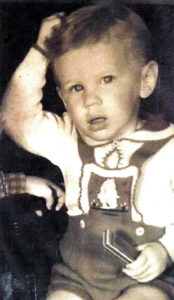
Jon Gindick’s fate was sealed early on, or so it would appear.
Call it destiny, call it coincidence but, as this photograph clearly shows, the idea that the diatonic just might play a major role in Jon’s life was planted early on.
The fact that he was born in Hollywood, where stars are made and fates are played out on the big screen, would seem to point in another direction.
He lived in Hollywood Hills, a short block from the famed Grauman’s Chinese Theater, where the homes are, as he says, stacked up on top of each other. Not surprisingly, the neighborhood was filled with creative folk, and Jon can remember waking up to the sound of musicians practicing scales and “the clickity-clack of typewriters.”
He allows that while his parents were not musical, they appreciated good music and had an eclectic collection of records that ran the gamut. Jon remembers their playing Larry Adler’s Rhapsody in Blue on the family’s old Packard-Bell console.
He was all of four.
Two years later, the family moved from tinsel town to Visalia, which Jon describes as “farming country” and “the Mississippi Delta of California.”
It was a time when Elvis Presley was king and rock was rocking, and Jon says that, being creatively-inclined, he wanted to be just like him. And so, while he played around with playing a variety of instruments, going so far as to play the trombone in his elementary school’s marching band, nothing called to him. Not yet.
Sometime around his thirteenth year, he picked up the guitar, which was more in tune with the times and tunes he wished to play. When the British Invasion took over the air waves, Jon and some of his high school buddies put together a band, their music influenced by the sounds of the Beatles and America’s own Bob Dylan.
Gindick says that for a would-be musician, Dylan’s sound was more do-able. “I felt it was more music I could play.”
And so he did, adding the harmonica to his musical toolbox, singing and playing it along with the guitar, much as Dylan did, and trying his hand at writing.
All of this while majoring in sociology and psychology at UC Berkeley. But, to hear Jon tell it, his mind was on other things. “I played music every day,” he says, “while I pretended to study the other stuff.”
It was a glorious time to be young and immersed in the music scene: a time he describes as being “rich in the folk music way”.
“You’d walk around Sproul Plaza ─ the main quad at Berkeley ─ and the place would be alive with music. And you could sit in with different groups. It was all very folky ─ Uncle Dave Macon, Doc Watson, Hank Williams.”
And though he says it wasn’t very bluesy, when he happened upon “one of the famous blues men of that time sitting on a nearby bench playing the guitar,” he recognized “the elderly gentleman” immediately.
It was Reverend Gary Davis, who wasn’t as well-known by the general public as other players. How did Jon know about Davis? Says Gindick, “When you’re with people who are fascinated with music, you go deeper than what’s playing on the radio.”
And so he did, moving from group to group on the plaza, bag of harmonicas and guitar slung over his shoulder, soaking in the culture and what he fondly refers to as “real folk and blues”.
How did his parents feel about his deepening love affair with music?
“They were fine with it,” he says, noting that they were more concerned with other aspects of his life. Such as? “Smoking pot. Being a hippy. Not being serious about working, and me fighting the Vietnam war in my own way.”
It was a rebellious time for many young men and women; and Gindick was, by his own account, a rebel. “When they tried to draft me I played the harmonica during the physical, and I got arrested. It was so absurd; I guess that’s why they let me go. But then,” he says, “I’ve always been my own guy.”
And so, though his parents may have had some concerns about his life choices at the time, he says, “I don’t think it was ever about the music.”
Did he ever play his music for his folks? Gindick laughs. “I played my music for them, but they weren’t very complimentary of the way it sounded. But they were always very supportive of everything I did.”
Which is a good thing, as “everything” included a post-graduation period, where he went for a walk on the wild side, doing everything from loading boxcars to working in the fields and packing houses of California.
He says his goal was to become a writer and so, when he wasn’t loading or working or even sleeping in those boxcars, he was turning out short stories and a novel or two, “and trying to develop my chops. And that’s how I came to write my first harmonica instruction books, combining my love of writing and making music.”
Jon was living in the mountains at the time, just east of Sacramento, where, with any luck, a fella could live a good life without breaking the bank.
“I had 40 acres on the American river for 40 dollars a month, in a little cabin that I moved in, and it was pretty good. And I would write and come out of the mountains to work.
“One of the major conflicts of my life back then was whether to be a great writer or a musician, and I eventually resolved that conflict by writing books that used story-telling to teach harmonica.
“I seem to have a gift for teaching and making complicated things simple, or finding the essence of things and conveying them to people.”
He tested the waters in the mid-70s, placing an ad in a local community newspaper.
Was there anyone interested in learning how to play the harmonica?
The answer was ‘Yes’ and, before he knew it, the phone was ringing and would-be players were signing on.
“I had this irresistible urge to get other people playing,” he says, “and so I started teaching. And the more I taught, the more I realized how much I enjoyed sharing what I knew with others, particularly when it came to improvising.
“I discovered that there were certain notes that always worked no matter what chord you were playing, notes I call ‘safe notes or reeds’. And they would be the spine of your improvisation.
“In my simple system, there were two kinds of safe notes: wailing notes that would create musical tension, and notes of resolution that resolved the musical tension.”
Jon referred to those notes that weren’t safe as “stepping stones”, which is to say, “notes or reeds that you would pass over quickly to get to the safe ones.”
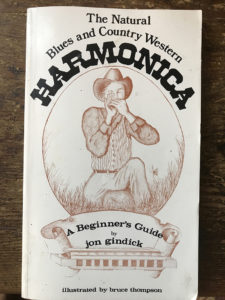
“The system gave non-musicians a non-musical way to think about music,” he says, a system that caught on, big time.
His first book ─ The Natural Blues & Country-Western Harmonica ─ would sell a million-and-a-half copies, pretty incredible in any case, but made all the more amazing when you realize that it, along with other early volumes, was self-published, advertised and promoted without the backing of a major publishing house. It was also before the Internet and its ability to reach a worldwide audience quickly and inexpensively.
So how did he do it? Says Gindick, “I advertised in Rolling Stone magazine. You would get a Special 20 harmonica, a one-hundred-page book, and a sixty-minute cassette tape for $13.95.
“This was in the late 70s and early 80s, before the magazine became ‘corporate’. And they would call me and tell me when they had room to give me a lower price.” He pauses reflectively before adding, “The world was a friendlier place.”
As time went on, Jon began developing ideas, adding more books and related items to his catalogue and filling the orders out of his apartment. His one-man shop blossomed, to the point where he began hiring people to help with order fulfillment.
“For a certain period of time my parents did it,” he says, “because they loved opening the letters from people and seeing their son’s engagement in the world.”
And engaged he was, merging his writing with his teaching programs. He went back to school, majoring in group psychology in order to get a better handle on how people learn, and put those lessons to use.
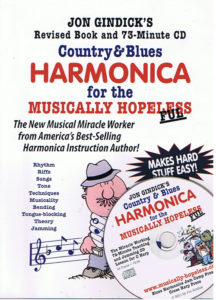
A small publishing company took note of his success and, in 1984, offered to buy that first book from him. Jon wasn’t interested, but offered to write a similar book for them based on the first one. The newly minted Country and Blues Harmonica for the Musically Hopeless would sell over 1,000,000 copies between 1984 and 2000, when the company was sold.
Meanwhile, back at the ranch, Jon was living off of the royalties from both books, while adding to the collection with titles like Bluesify Your Melody and Rock’n Blues Harmonica.
His business acumen saw the benefits of doing as much of the work in-house as possible, from writing, to hiring an illustrator, and publishing these books under the Cross Harp Press banner. And, with each book, he learned something new, something that would benefit both the company and its audience.
“I had a creative imagination,” he says. “I realized that, if music is an art, then instruction should be artful. I learned to communicate in a simple way,” presenting each lesson and illustration “with lots of white space”.
Jon plays “You Are the Sunshine of My Life” in 12th Position
It was only a matter of time before the idea of teaching simply and directly, in a setting with lots of white space, flew off the page in the form of a five-day blues harmonica jam camp. And so it was that, in 2001, the first camp was held in Southern California, and would later move to Clarksdale, Mississippi, smack in the middle of the Mississippi Delta.
Some years ago, Jon added a West coast jam camp, one with a decidedly different vibe.
Both camps bring professionals from around the country together to coach, inspire, perform with and bring out the best in every camper.
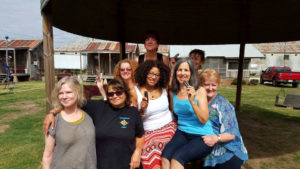
Beginners and intermediate players thrive in an atmosphere that promotes camaraderie.
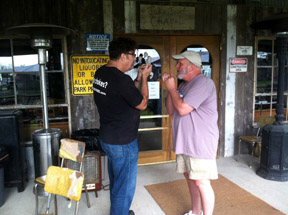
They jam,
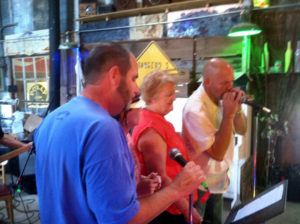
they sing,
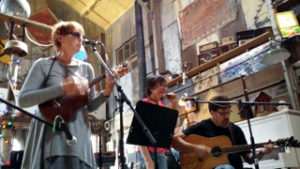
watch the pros,
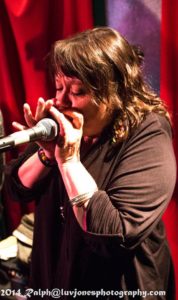
Boston’s Cheryl Arena showing how it’s done.
and do their own thing,
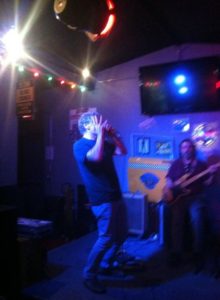
getting “musically crazy and creative” while soaking up the atmosphere.
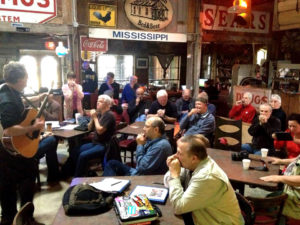
The Clarksdale camp experience begins at the Shack Up Inn, a funky ‘Can’t get-more-down-home-than this,’ budget-friendly, one-of-a-kind location that speaks to the blues. Their slogan: “The Ritz we ain’t.”
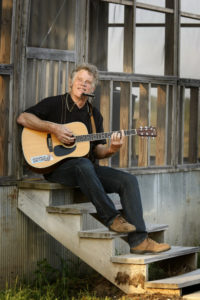
“It’s kind of well-known,” says Jon, and the hotel/motel’s website bears that out, with a guest list that has included everyone from Morgan Freeman to, well, Jon Gindick! Camera crews have been known to hunker down there, along with blues lovers who enjoy the homey feel of the ‘shacks and bins’, whose furnishings look more like Goodwill cast-offs than fancy hotel bed linens. It’s a trip, truly, with optional sojourns along the way.
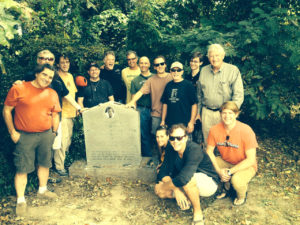
“They get to explore the Mississippi Delta in the context of the music in the cotton fields,” says Gindick, “and it’s really neat.”
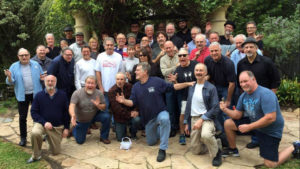
The Ventura, California camps deliver the same great learning opportunities, top coaches and good times, but in a decidedly different setting, complete with seaside views.
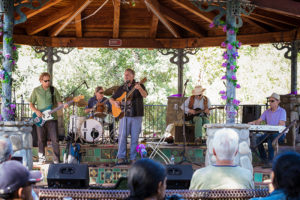
Jon and the band entertains in Ojai
And, like the Delta experience, participants have plenty of time to explore the area, enjoy the camaraderie, and jam their hearts out at a local hot spot.
“The locations are really special,” says Jon, “and people bond in a nice way. We also teach them to sing, and get them playing the guitar.” It is, he says, an overall musical experience, where skills are learned by doing.
And that, he says, is the key to it all.
When asked if he had any advice to pass on to our readers, he replied, “I would give the same tip to beginners and intermediates, and that is to make yourself musical. Sing. Play the harp. Use a metronome or drum machine and listen to music. And turn yourself into the instrument. The musician is the instrument, not the harmonica. The harmonica does what the real instrument wants it to do.”
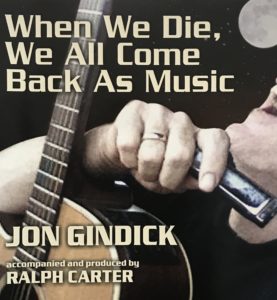
As you can tell, Jon’s a busy guy, and it’s been a while since his first CD, When We Die, We All Come Back As Music, came out. But fans will be happy to know that a second album of original tunes is in the works.
What can you expect from this latest album?
“Good songs in a variety of styles, from blues to a kind of a Cuban style that I’ve been using, to jazzy. I write in lots of different genres,” he says, “with a rumba song here, and a sort of New Orleans-style blues there.”
With no set release date, you’ll just have to wait to get a copy. But we offer you a preview of things to come, in the form of the title cut, Born to Wail.
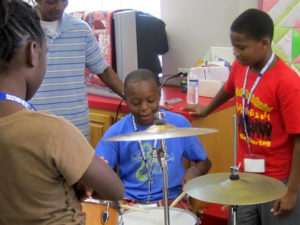
Jon Gindick is all about music, and making it as joyful, accessible and uplifting as possible. That goal extends beyond the kits, camps and other offerings in the Gindick catalogue to the children of Tutwiler, Mississippi, where, for the last 10 years, his charity, the Sonny Boy Club, works to teach music to the under-privileged children of the Mississippi delta.
“This little town of Tutwiler has a median income of $20,000 a year. It’s very poverty-stricken. And so we have a music program there. It’s an after-school program that’s been going on for close to a decade.”
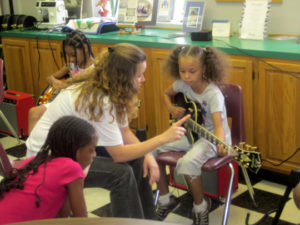
The organization depends on donations, both of money and instruments, and hires local musicians to teach the children how to sing and play. “Even if these kids don’t go to college,” says Gindick, “I believe that learning music will help develop their minds. If you learn music as a child, it fuels your brain while giving you pleasure and joy. And that’s been my motivation.”
To learn more about the Sonny Boy Club and get the latest on Jon, his music, books, products and blues harmonica jam camps, go to www.gindick.com.
P.S. You can grab a free copy of Jon’s “Bluesify Your Melody” with the Breakthrough Blues course

Comments
Got something to say? Post a comment below.